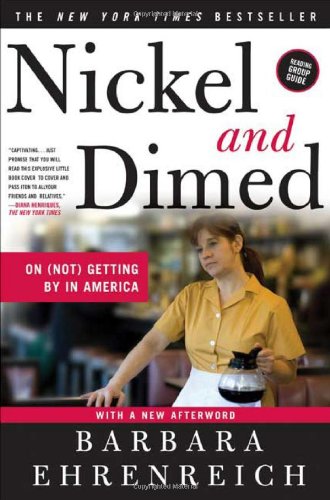All Nonfiction
- Bullying
- Books
- Academic
- Author Interviews
- Celebrity interviews
- College Articles
- College Essays
- Educator of the Year
- Heroes
- Interviews
- Memoir
- Personal Experience
- Sports
- Travel & Culture
All Opinions
- Bullying
- Current Events / Politics
- Discrimination
- Drugs / Alcohol / Smoking
- Entertainment / Celebrities
- Environment
- Love / Relationships
- Movies / Music / TV
- Pop Culture / Trends
- School / College
- Social Issues / Civics
- Spirituality / Religion
- Sports / Hobbies
All Hot Topics
- Bullying
- Community Service
- Environment
- Health
- Letters to the Editor
- Pride & Prejudice
- What Matters
- Back
Summer Guide
- Program Links
- Program Reviews
- Back
College Guide
- College Links
- College Reviews
- College Essays
- College Articles
- Back
Nickel and Dimed by Barbara Ehrenreich
Looking Inside a Keyhole
Minimum wage is creeping up the pay scale. From 2006 to 2007, it heightened from $5.15 to $5.85. From 2007 to 2008, America's lower class was treated with another 70 cents. And in 2009, minimum wage is at a whooping $7.25. This is seemingly great, with emphasis put on 'seemingly', because life for America's lower class is a lost piggy bank. Barbara Ehrenreich's Nickel and Dimed is an effortless, on-the-nose read allowing America to peek though the keyhole of a door long forgotten: America's lower class and the average blue collar worker.
Nickels and dimes and pennies, oh my! Posing as a member of the lower class, Ehrenreich makes well use of the nickels and dimes that would normally be stuck in between the couch cushions of her 'real' upper class home. Ehrenreich informs us in the Introduction: Getting Ready, she is not really a 'server', but she is actually a 'guest'. Her real life being that of an upper class writer, she audaciously enlists to become a chip of the lower class for three dreary months. Ultimately, she provides a primary source account to her choice of blue collar gig and location, sleekly composed into three chapters accordingly: Serving in Florida, Scrubbing in Maine, and Selling in Minnesota. This chosen framework administers polished transitions and a keen insight to Ehrenreich's argument. In the course of the three chapters, the reader becomes enriched with her invariable struggle to pay rent with a single job, her agitation with management, her suspicion towards corporate, and her fearless desire to prompt her colleagues to revolt.
Following the three chapters is an evaluation in which Ehrenreich convincingly brings the journey to a fruitful conclusion. She succinctly recaps the book with her distinct spunk and confidence that gets the reader going whether they're for or against her fancy. Not only does her attitude color the grand finale, but Nickel and Dimed, as a book, is well equipped with captivation. Ehrenreich uses just enough sarcasm to get the reader responsive, but not offended. Her sometimes comical approach and always straight-forward style take the reader's understanding to an even further level: a level on which all ages can relate to her findings. Writing as a common person, Ehrenreich uses plain sentence structure and commonplace diction to incorporate the social, financial, mental, and physical effects of her venture that anyone can identify with.
Nickel and Dimed introduced a clear stance on minimum wage that was easily convincing while interweaving support from Maslow's Hierarchy of Needs theory. Starkly, minimum wage is not admissible in Ehrenreich's say-so. In the course of her taxing blue collar jobs, she experiences physiological pain and stinted safety. Tugging on the heartstrings for a Pathos appeal, she underscores that she has no ability to pay for the medicine to make her well or the hotel room that has a lock on its door and a screen in its window. According to Maslow's Hierarchy of Needs, Ehrenreich will never progress to satisfy any needs of love, esteem, or self actualization without her safety and physiological needs being satisfactorily met.
While Maslow may have helped her support such a robust argument, her capabilities and argumentative skills were certainly embellished as the author of over fifteen other books, such as Global Woman, Blood Rites, and The Hearts of Men. However, what made the book an interesting read was Ehrenreich's matter-of-fact attitude, traditional diction, and lionhearted do-it-yourself actions that '[illuminated] the invisible army that scrubs floors, waits tables, and straightens racks at discount stores' (Ehrenreich, USA Today). America owes approbation to her for sacrificing her plush life in exchange for an apron and fast food, so that the plight of the down-trodden could be escalated into our consciousness. And she leaves it up to America to exchange the lower class's invisibility for revolutionary recognition in the hopes of expanding the opportunities for more to enter the middle class. Nickel and Dimed opens a door the reader thought had been closed long ago, the lower working class of America, and challenges us to not accept it as a simple fact of life.
Similar Articles
JOIN THE DISCUSSION
This article has 0 comments.

